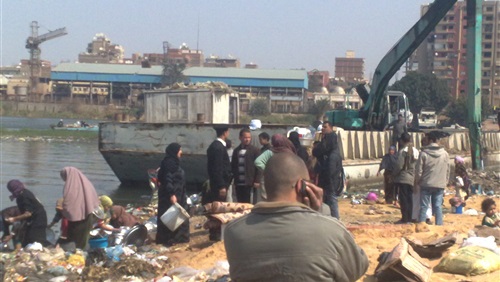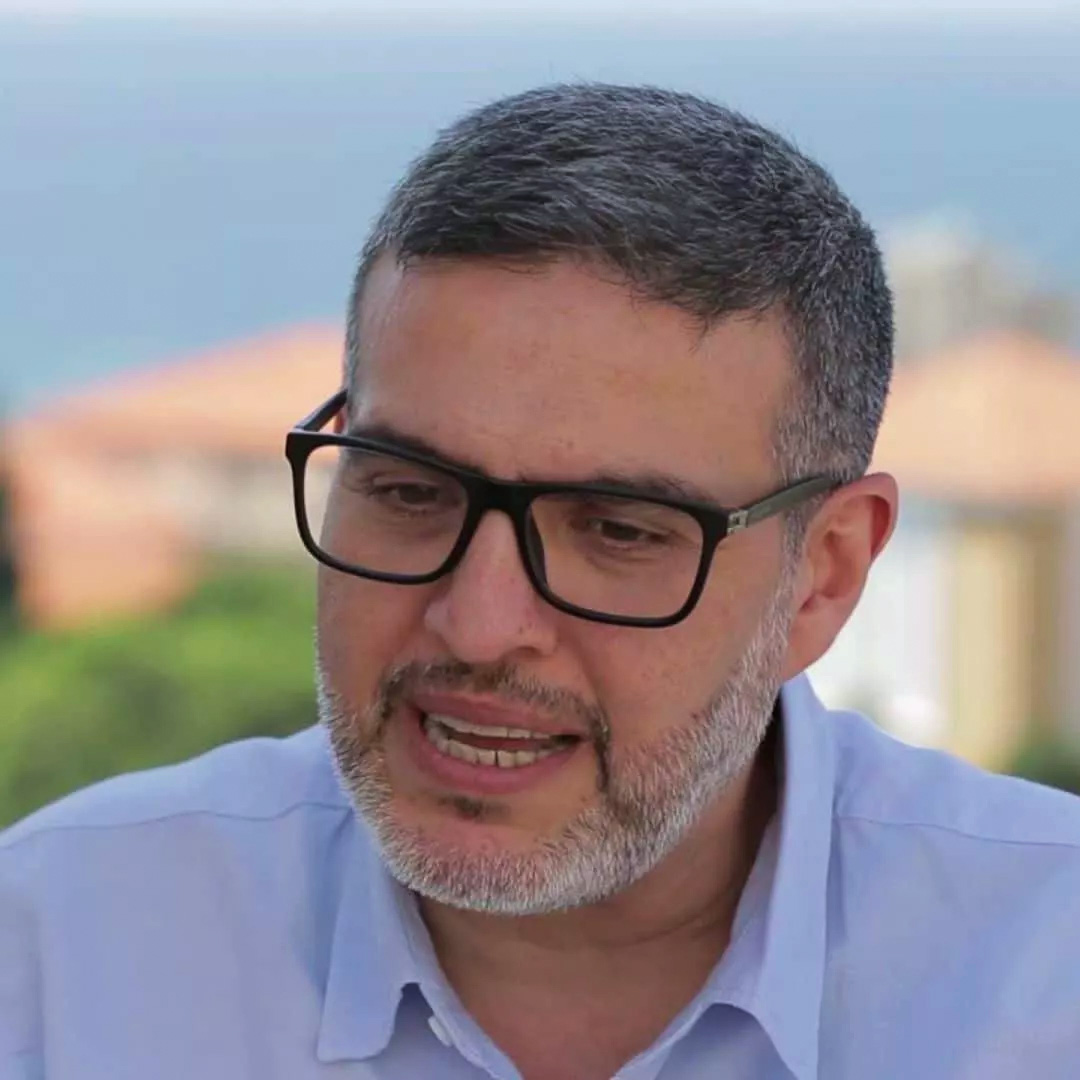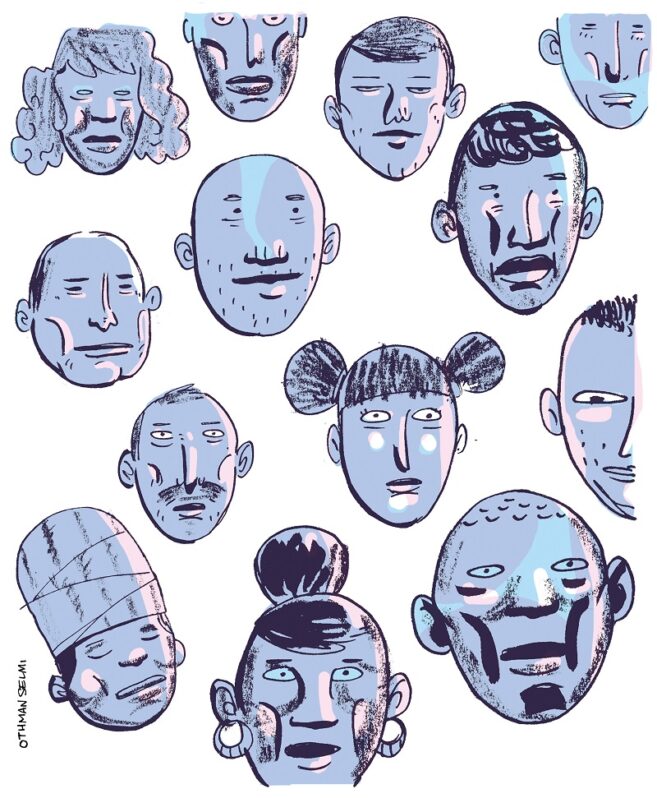The Forced Evacuation of Egypt’s Ashwa’iyyat

On Sunday, July 16, 2017, as part of the Egyptian state bodies’ campaign against illegal construction on state-owned lands, the residents of al-Warraq island in the Giza governorate awoke to the demolition of their homes. This island is considered an informal settlement [ashwa’iyyat commonly translated as ‘slum’], and the aim was to forcibly evict the residents pursuant to decisions to remove encroachments on state lands. Violent clashes erupted between the residents and the police forces assisting the operation, resulting in the death of one citizen, 17 arrests and many wounded. The event traces back to the conference that the Commission to Recover State Lands had held days earlier.[1] In it, President el-Sisi stressed the need to recover the inhabited Nile islands. He stated that the sewerage of the 2,250 families inhabiting al-Warraq drains into the Nile, costing the state great expenses in water treatment. The evictions began without any warning for the residents that their houses would be demolished. They were given no chance to move their personal belongings, no alternative housing to protect them from homelessness, and no appropriate monetary compensation for the harm done to them.
Al-Warraq island is not the first case of violent eviction. For example, in 2007 the state tried to forcibly evict the residents of al-Qursayah island via repression and violence. These attempts were renewed in 2013 by the military police, leading to the death of one citizen and many arrests. The state’s policies for evacuating these areas spark debate about the extent to which the state realizes the social and economic burdens of the lower classes, as well as the legislative framework governing the existence and removal of informal housing. The Egyptian state intends to transform downtown Cairo into a tourist center with foreign and Gulf capital in order to attract more affluent segments of society as part of the Cairo 2050 plan, which was introduced in 2007. Consequently, thousands of citizens are at risk of being rendered homeless and losing their sources of income.
The Genesis of the Ashwa’iyyat
This issue [of informal settlements] is the most notable consequence of the policies of marginalization that the state has followed for decades. These policies reflect its biases toward investors at the expense of the poor. The 1970s was a turning point in modern history, whereby the policies of economic opening led to a concentration of capital in the capital city and the deterioration of agriculture and industry in other governorates and cities. Consequently, inhabitants of these regions migrated toward the capital in search of employment opportunities and, subsequently, housing nearer their workplaces. Because of the absence of plans for social housing for the poor and the focus on existing housing plans for the upper classes, in addition to the rise of prices, some citizens took advantage of land in central locations, creating shelter for their families.[2] They formed tin and cement residential clusters, such as al-Warraq island, al-Dahab island and the Ramlet Bulaq district[3] – commonly referred to as “unsafe housing”.[4] The construction of these districts and the housing in them occurred under the noses of state bodies, as they were unable to provide alternative solutions to the housing crisis and these lands, deserted at the time, had no real economic value. The quiet encroachment of the ordinary led to the smooth expansion of these areas at a time when the state was directing its resources to investments outside the vicinity of the traditional city.[5]
In the mid-1990s, the state’s neo-liberal policies especially impacted the real-estate sector, as was evident in the construction of luxury resorts and urban communities for the rich at the expense of the poor and marginalized lower classes, which could not attain affordable housing. Toward the end of the Mubarak era, the state began thinking about converting the old capital into a tourist area and center for trading large investments with foreign funds. Hence, it began planning to evacuate these informal settlements, promoting the idea that they are unsafe for their residents and sheltering criminals and terrorists, without considering the residents’ legal status or providing them with alternative housing. But in the wake of the January 25 Revolution, the plan to develop Cairo stalled because of popular pressure and continuous protests of residents.[6] However, the state recently announced that it is establishing a new administrative capital outside Cairo and is earnestly pursuing the Cairo 2050 plan, leading to an increase of taxes on citizens and the eviction of residents of the Nile islands and strategic areas in the capital.
Between the Legislative Vacuum and Flexible Terminology, the Executive Authority Profits
There are no clear legislations governing the eviction of citizens from an area “for public good”, and the state’s executive bodies maliciously use legal tricks to displace and evict residents from their areas. In the case of al-Warraq,[7] for example, the executive authority claims that these islands should not be inhabited because in 1998, the prime minister classified them as a nature reserve,[8] thereby prohibiting any citizen from building within 30 meters of the Nile’s banks.[9] On the other hand, the state turns a blind eye to the Nile clubs of the judicial bodies, army, and police, which block citizens’ view of the river and drain all their waste into it. The state also previously signed usufruct contracts, usually renewable, with the residents of these areas.[10] Additionally, in 2001, the Council of Ministers issued a decision prohibiting the evacuation of any of the buildings on al-Dahab and al-Warraq, encouraging citizens to register their lands.[11] The governorate also introduced facilities, including water, electricity, schools and post offices.
In 2007, the Giza Governorate decided not to renew the usufruct contracts signed with the residents of al-Qursayah Island. However, the residents contested this decision before the Court of Administrative Justice. In 2008, the court annulled the decision, citing that the residents had honored their material obligations.[12] New attempts were made in 2013: military forces stormed the island to evacuate it under the pretext that it was a strategic military area. In a similar move, the state aimed to evacuate the Ramlet Bulaq neighborhood in 2011, when it issued a decision to temporarily appropriate the land in order to earmark it for private investments,[13] relying on Article 2 of the Expropriation of Property for Public Benefit Law,[14] without informing residents. It did not provide them with alternative accommodation or pay them monetary compensation for their property in accordance with the provisions of the aforementioned law.[15] This law lacks clear procedures for cases of displacement and in-kind or monetary compensation. It also contains no punishments to deter violence by public authority personnel.
Between the Public Prosecution and the State Council: How is the Judiciary Addressing Forced Evictions?
To clarify the judiciary’s position on the issue of informal settlements and evictions, we must review the way that the Public Prosecution and various judicial bodies have handled the violence that accompanies evictions and the related court rulings. As stated earlier, al-Warraq witnessed clashes that led to the death of one citizen and the arrest of 17. The police departments and the Directorate of Security claimed not to know where they were being held for 24 hours. They were then presented to the Public Prosecution and charged with attacking a public official while at work, carrying a weapon without a license, blocking a road, and assembly. The accused told the Public Prosecution that they had been beaten in the Giza prison,[16] but it paid no attention to these claims. The Public Prosecution did not charge any officers accompanying the operation with killing a citizen or wounding many. Notably, the Public Prosecution is using these charges to hold the accused in remand, and the executive bodies are using this to pressure their families to relinquish the lands in exchange for their release. Hence, the Public Prosecution is being used as a tool for intimidating residents and goading them into leaving the island, and the Public Prosecution’s bias toward the executive authority is clear. The same happened with the residents of al-Qursayah: armed police and military forces stormed the island, leading to the death of a fisherman, the arrest of many residents, and their forced signing of a document relinquishing the lands for public good.[17] They were also court-martialed on charges of attacking army officers enforcing the law and trespassing on land belonging to the Armed Forces.
On the other hand, it is impossible to ignore the State Council’s role entrenching a different orientation within the judicial system, one that does justice to the inhabitants of these regions and affords them a small degree of protection. In its rulings, the State Council has embraced the French State Council’s theory of “balancing the benefit and detriment”,[18] rejecting the use of military force to evacuate land and deeming that it could disturb public security.[19] The Egyptian State Council stated that state property should be preserved and exploited in accordance with operational and economic plans, but expelling thousands of people poses a greater risk to their lives by rendering them homeless and without sources of income, which would threaten security and social peace. Additionally, in its rulings, the State Council discussed another legal issue related to the concept of the rule of law: it highlighted that citizens’ public and private rights and freedoms should be protected and take precedence over public interest considerations and conveniences.
However, the executive authority has not applied the administrative judiciary’s rulings that do justice to the residents of these areas. For example, in 2008, the residents of al-Qursayah obtained a ruling requiring that the usufruct contracts pertaining to their land be renewed after the governorate decided not to renew them.[20] But the executive authority tried once again to circumvent this ruling by saying that al-Qursayah belonged to the Armed Forces and is a strategic military area, and the decision to evacuate it therefore falls within the scope of sovereign acts that cannot be contested. In its ruling, the State Council responded that: “The legislators did not explain a definition of these acts, and there is no exclusive, comprehensive criterion for them. The legislators left it up to the judiciary to decide whether the act presented to it is legally classified as a sovereign act”.
Conclusion: The Social Impact of the Policies to Transform the City
The unassuming increase in neo-liberal policies has caused radical changes in the concept of the city and relations among members of the same social class and across different classes. The rich have begun deserting their neighborhoods in the city center for gated communities in more attractive neighborhoods, at the expense of the poor and marginalized lower classes. The abandonment of the principle of equal opportunity[21] has dismantled the [inter-]class cohesion within various neighborhoods that was based on reciprocal relationships in various areas –be they professional, commercial or vocational. For example, the rich have relied on large supermarkets to cover their daily needs, which has led to the collapse of the small businesses of low income earners and craftsmen. This diversity was serving the basic needs of a broad section of various neighborhoods, thereby generating a state of harmony and providing low-income earners sustainable employment opportunities. In addition, the residents of informal housing refuse to vacate because there are no practical alternatives. Even if alternatives were provided, the policies of class segregation are reducing these residents’ means of production and the potential for household production.
This article is an edited translation from Arabic.
[1] President Abdel Fattah el-Sisi’s speech at the conference of the Commission to Recover State Lands on June 7, 2017.
[2] See Mike Davis, Planet of Slums, Verso, 2006.
[3] There are many areas considered informal settlements, examples include Manshiyat Naser, Ezbet Khairallah, the City of the Dead, Izbat al-Haganah, and Hikr Abu Doma.
[4] See Mike Davis, op cit.
[5] The term is taken from sociologist Asef Bayat. See Mike Davis, op cit.
[6] Cairo 2050, under the auspices of Gamal Mubarak, son of former president Hosni Mubarak.
[7] Al-Warraq island is located in the Nile in Giza governorate and hosts approximately 2,500 families working in elementary occupations.
[8] Prime Ministerial Decision no. 1969 of 1998 on Deeming the Islands Located in the Nile Riverbed Nature Reserves.
[9] See Article 8 of Council of Ministers Decision no. 1383 of 2005 on Protecting the Nile and its Shores, dated August 30, 2005.
[10] Court of Administrative Justice ruling on Case no. 782 of Year 62 q. issued on November 16, 2008.
[11] Council of Ministers Decision no. 848 of 2001 on the Impermissibility of Evacuating Any Residential Buildings Erected on al-Dahab and al-Warraq Islands in Giza Governorate.
[12] See footnote no. 9.
[13] Cairo Governor Decision no. 8993 of 2011 on Issuing a Decision to Temporarily Appropriate Land Hosting the Slums of Bulaq Abul Ela.
[14] Article 2 of Law no. 10 of 1990 on Expropriating Property for Public Benefit stipulates that
For the purposes of this law, public benefit acts include: first, constructing, expanding, modifying, or extending roads, streets, and squares or constructing new neighborhoods; second, water and sewerage projects; third, irrigation and drainage projects; fourth, energy projects; fifth, constructing or modifying bridges, train crossings, and underpasses; sixth, transportation projects; seventh, urban planning objectives and improving public utilities; eighth, anything considered a public benefit act in any other law.
[15] Articles 5, 6, and 7 of Law no. 10 of 1990 on Expropriating Property for Public Benefit.
[16] “Tajdid Habs 8 min Mu’taqali al-Warraq wa-‘Ard 19 Akharin ‘ala al-Niyaba”, Mada Masr, July 19, 2017.
[17] Interview with one of the fishermen in a video published by Al-Masry Al-Youm titled “al-Qursayah 13 ‘Amman fi Muwajahat al-‘Askar”.
[18] The Ville Nouvelle Est case of May 28, 1971. France’s minister of housing issued a decision to construct a residential area for students capable of accommodating approximate 20 thousand, which required removing approximately 100 homes. France’s Supreme Administrative Court annulled the decision, giving the interest of the residents of those homes, the maintenance of their social security, and their protection from homelessness precedence over the construction of a new residential area.
[19] See Court of Administrative Justice ruling no. 782 of judicial year 62 on al-Qursayah island issued on November 6, 2008.
[20] Ibid.
[21] Article 9 of the Constitution stipulates that: “The state ensures equal opportunity for all citizens without discrimination”.
Mapped through:
Articles, Egypt, Environment, Urbanism and Housing, Inequalities, Discrimination and Marginalisation
Related Articles



